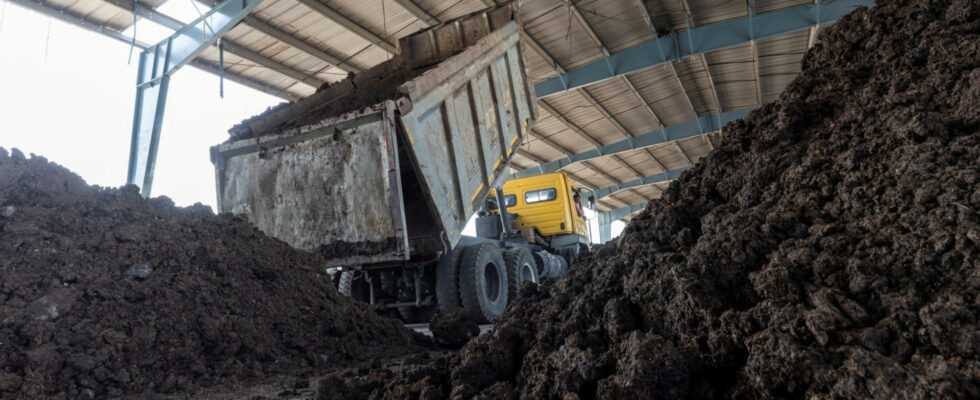Households in rural communities in India have always used dung and manure as fuel, which they dry in patties in the sun. This polluting practice has continued despite government efforts to phase it out and replace it with subsidized gas cylinders.
“Manure Money”
Villages on the outskirts of Indore, capital of the state of Madhya Pradesh, can now benefit from their manure, thanks to a pilot project for a biomass plant that uses it to supply energy to the city. “We have very good quality dung, and we keep it clean to make sure it fetches the best price,” farmer Suresh Sisodia told AFP.
His operation is one of the many beneficiaries of the so-called “Gobardhan” project, “manure money” in Hindi, born with the biomass plant in the vicinity. It was inaugurated by Prime Minister Narendra Modi in person last February. The 46-year-old farmer earns 218 euros per truckload of fresh manure destined for the power station, which is more than the average monthly income of a farm household in India.
Mr. Sisodia’s farm has 50 head of cattle. He occasionally offsets his costs by selling manure as fertilizer, but he now hopes for a more sustainable source of income.
“Farmers collect it once every six or twelve months, and some seasons they don’t. But the plant could provide us with a regular income,” he says, adding that his farm produces enough manure to fill a truck every three weeks.
The excrement of his cattle is transported to the plant which mixes it with household waste to produce flammable methane and an organic residue that can return to the farms as fertilizer. Eventually, the plant is expected to process 500 tonnes of waste per day, including at least 25 tonnes of cattle dung, which would be enough to supply Indore’s public transport system with a considerable surplus.
“Payment guarantees”
“Half of it will supply buses in Indore and the other half will be sold to industrial customers,” plant boss Nitesh Kumar Tripathi told AFP.
The “Gobardhan” project has come up against many obstacles, such as the poor state of the roads in this rural area, making it difficult for trucks to access the farms where to collect the natural fuel. The farmers were initially suspicious, fearing that it was an enrichment scheme on their backs. They then demanded “guarantees of prompt and regular payments” before committing, said Ankit Choudhary, in charge of the potential suppliers he solicits in the villages.
Mr. Modi’s government has high hopes for this initiative and has pledged to install another 75 biomass power plants over the next two years. The exploitation of alternative energy sources is an urgent necessity for the country which depends on coal in order to satisfy nearly three quarters of the energy needs of 1.4 billion inhabitants.
Indian cities are among the most polluted urban centers in the world. Air pollution is responsible for more than one million deaths a year in India.
wandering of the sacred cows
“Gobardhan” does not fail to seduce Hindu nationalists, Mr. Modi’s main electorate, and all those for whom cows are sacred. Under their leadership, “cow vigilantes” decimated cattle slaughterhouses usually owned by Muslims and lynched anyone suspected of contributing to their slaughter.
But these cattle-centric religious policies have resulted in the abandonment of cows that no longer give milk and now roam all over the country. Government supporters, such as Malini Laxmansingh Gaur, former mayor of Indore, hope that these biomass power plants will incentivize farmers to keep their cows.
“This additional income will make it possible both to clean up the villages and to fight against the wandering of cattle,” she told AFP.
